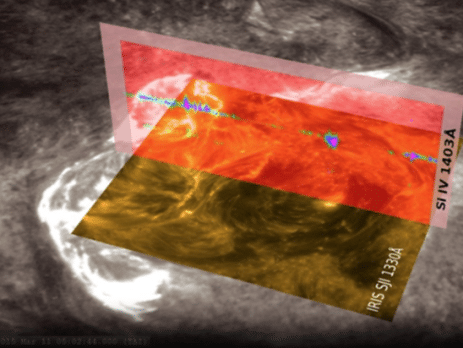Ultra-Narrowband Optical Filters Pushing Boundaries from the UV to the LWIR
Developments in ultra-narrow manufacturing capabilities enable transformative, world-changing, technology.
Advances in optical sensors and imaging technologies are ever more rapidly assimilated into how humans interact, understand themselves, and explore the world around them. The scope of inquiry for optical devices is broad and they enable technologies within, such as implanted transdermal bioMEMS devices, and beyond, or as space-flight surveyors deployed as near and deep space instruments. Central to the functionality of modern optical devices, ultra-narrow bandpass (UNBP) thin-film optical filters enable discrimination of sub-nanometer bands inside broad spectra. These filters, pioneered as NIR DWDM filters for the telecommunications industry, are now essential in extracting meaningful signal from imaging and sensing devices operating anywhere between the deep ultraviolet and the mid infra-red bands.
Novel deposition techniques, such as SIRRUS™, developed at Alluxa, have transformed the fabrication of UNBP filters from a low throughput, high-cost enterprise into a highly deterministic manufacturing process. Critical filter attributes such as form factor, spatial uniformity, and spectral resolution have exceeded capability/performance thresholds of recent years. The following examples highlight some of the latest applications of UNBP’s.
Heliophysics, as a subject matter, has come to the forefront as a social curiosity and as a venue for study of a broad range of sun-earth interactions. Research into magnetic field/plasma phenomena, such as coronal mass ejections (CMEs), is a subject of great interest.2 Investigations over the last two decades range from high atmospheric flights to instrumentation aboard numerous space-flight missions. These solar surveyors have used multi-wavelength UNBP filters for high spatial and temporal resolution scans of the low, mid, and high segments of the heliosphere. As the next generation instrumentation is being developed, the requirement for finer resolution imaging of plasma velocity (i.e., temperature profiling of the heliosphere) have increased. To address this need, Alluxa is building high finesse multi-cavity UNBP’s in the UV.
Figure 1. Interface Region Imaging Spectrograph (IRIS) explorer visualization with windowed SJI imagery1.
Filters with >500 layers have been produced for imaging spectrographs and other sensing applications. Using an array of instrumentation developed internally, Alluxa filters are shown to exhibit FWHM < 0.5 nm and peak transmittance of 0.10-0.50 (10-50%), while blocking 200-1200 nm at OD6-12 as seen in Figure 2. This impressive spectral profile is attributed to deposition system configuration and process methodologies for minimizing losses (scatter + absorption) in high interface-count filters, a capability critical to high performing UV filters.
Atmospheric observation and modeling are a principal concern for everyone catching a ride on this blue-bubble. It could significantly alter individual lives and geo-economic constructs such as the green-house emissions global mercantile system. Specifically, filters at 532 nm and 1064 nm will be significant in upgrading our ability to measure backscatter and volume depolarization for diurnal cloud and aerosol profiles in the troposphere. Figures 3 and 4 demonstrate the performance of a 532-0.127 and 1064-0.25 OD6 Ultra-Narrow Bandpass filter, respectively, closely matching the intended theoretical simulation. The filters will be implemented in a flight mission for practical use in atmospheric Lidar remote sensing.3,4
Another area of experimentation and growth is that of gas monitoring and analysis, particularly at wavelengths in the LWIR. Laser applications in this wavelength regime range from experimental tattoo removal procedures to manufacturing medical equipment. Controlling the bandwidth of the laser and attenuating out-of-band light is key in these applications and, consequently, ultra-narrows are quickly becoming a critical component. Figure 5 showcases Alluxa’s capabilities to design and reliably manufacture a 10.6 micron with FWHM < 0.1 micron in the LWIR region.
The wide breadth of ever-progressing applications in need of ultra-narrow bandpass filters creates the demand for constant innovation and improvement. From minimizing loss or scatter in the UV, to greater repeatability and theory matching in the VIS and NIR, to increased in-band transmission in conjunction with narrower bandwidths in the LWIR, the call for innovation continues to be met by Alluxa. The SIRRUS™ deposition platform, along with Alluxa’s design and engineering expertise, has fundamentally contributed to the capability and advancement within a relatively short period of time as is demonstrated by these boundary pushing UNBPs.
References:
[1] SVS. “NASA Scientific Visualization Studio | a Slice of Light: How IRIS Observes the Sun.” SVS, 26 June 2015, svs.gsfc.nasa.gov/4318/.
[2] “EUVST – NASA Science.” NASA, NASA, science.nasa.gov/mission/euvst/.
[3] “Cloud-Aerosol Transport System (CATS).” cats.gsfc.nasa.gov.
[4] “NASA AOS – the ALICAT Lidar for the AOS-Inclined Orbit: Instrument Overview and Projected Performance.” Aos.gsfc.nasa.gov, aos.gsfc.nasa.gov/meetings-documents-more.htm?id=175.







